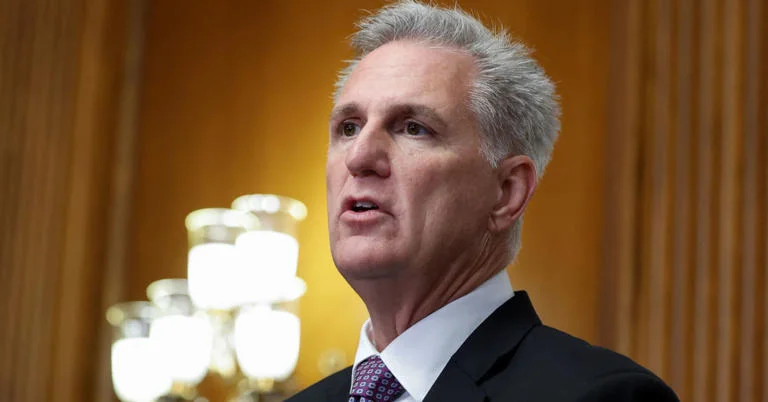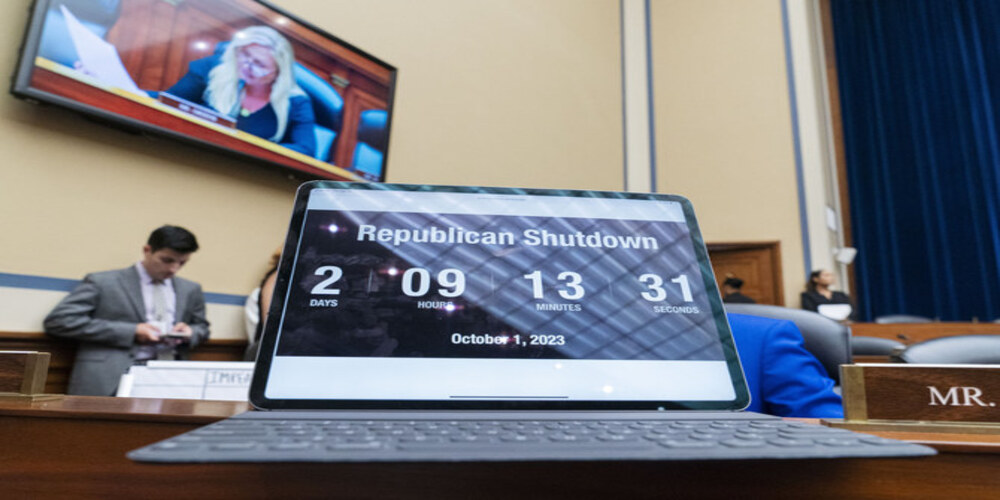As the clock ticks down to a potential government shutdown looms, with less than 48 hours remaining, the nation faces the prospect of a crisis that could profoundly affect millions of Americans. Despite the situation’s urgency, lawmakers find themselves deeply entrenched in their positions, resolving increasingly challenging.
A small but determined group of hard-right Republicans, representing only a fraction of the American populace, stands poised to push the entire country into a federal government shutdown looms at 12:01 a.m. on October 1. Such an event would disproportionately affect those needing assistance the most, including infants relying on WIC benefits for formula, unpaid military personnel, furloughed federal workers, and travelers grappling with extended TSA lines. This article delves into the latest developments in the government shutdown looms showdown and what it means for you.
The Latest Updates on the Government Shutdown Looms
In the eleventh hour before the September 30 funding deadline, House Minority Leader Kevin McCarthy has taken a firm stance, attributing the potential shutdown’s responsibility to the Democrats and the White House. His argument centers on their refusal to consider the border security provisions that House Republicans have been advocating for. McCarthy rejected accepting the Senate’s bipartisan stopgap measure, emphasizing his commitment to “stand for America” and secure the nation’s borders.

U.S. House Speaker Kevin McCarthy (R-CA) speaks during a press briefing about a looming shutdown of the U.S. government at the U.S. Capitol in Washington, U.S. September 29, 2023.
What Is a Continuing Resolution?
To address the impending crisis, the House plans to vote on a continuing resolution, a temporary measure providing a 30-day window for Congress to fulfill its primary duty of passing spending bills and thus avoid a shutdown. However, the conservative House Freedom Caucus members have expressed reluctance to support such a resolution. Even if the House passes it, the Senate is unlikely to approve it.
On the other hand, the Senate will vote on its version of a continuing resolution that would extend the deadline until November 17 for passing spending bills. Nevertheless, this bipartisan Senate plan is also expected to face rejection in the House. Thus, lawmakers are at an impasse, seemingly far from averting a government shutdown looms.
When Will the Shutdown Commence?
If legislators fail to pass a continuing resolution or a federal budget by September 30, the U.S. government will enter shutdown mode at 12:01 a.m. on Sunday, October 1. A continuing resolution, designed as a stopgap measure, would temporarily fund the government while Congress works to approve a comprehensive budget. The fate of the House’s resolution vote remains uncertain.
Impact on Social Security
One critical question on the minds of many Americans is whether a government shutdown looms would affect Social Security benefits. The positive update is that Social Security and Medicare beneficiaries will still receive their checks even if a shutdown occurs. Similarly, Medicare benefits will not be disrupted. However, it’s worth noting that employees within the Social Security Administration are likely to be furloughed, and there may be delays in government food assistance benefits. Some services not directly tied to Social Security payment benefits and direct-service operations could also face temporary suspension.
The Stock Market’s Response
Concerns have arisen about how a government shutdown looms might affect the stock market. While it’s not expected to have a significant impact, experts believe it has contributed to the recent 5% dip in the S&P 500 index, which currently stands at 4,275.
Marc Zabicki, Chief Investment Officer of LPL Financial, states that this shutdown concern is one reason for the market’s recent weakness. However, once the shutdown begins, there might not be a stark reaction from asset markets. It’s a factor that has already been incorporated into current prices.
Yet, the impending shutdown is not the sole driver of the market’s fluctuations. As noted by Jeffrey A. Hirsch, CEO of Hirsch Holdings and editor-in-chief of the Stock Trader’s Almanac, September is historically a weak month for stocks. Additionally, various other factors, including rising interest rates, student loan repayment deadlines, labor strikes like the United Auto Workers’ strike, increasing oil prices, and more, contribute to the market’s volatility, according to Howard Silverblatt, Senior Index Analyst for S&P Dow Jones Indices.
Silverblatt states, “We’re in a very volatile time now.”
As the nation stands on the precipice of a potential government shutdown looms, uncertainty looms over its impact. While some critical services will continue, the consequences of a shutdown could ripple through various sectors, including the stock market. As lawmakers grapple with their differences, millions of Americans anxiously await a resolution determining the course of their lives in the coming days.
Disclaimer: The information provided in this article is based on current developments as of its publication date. Please note that the situation may change rapidly, and it is advisable to stay updated through reliable news sources.
Contact us if you have any queries or concerns.




